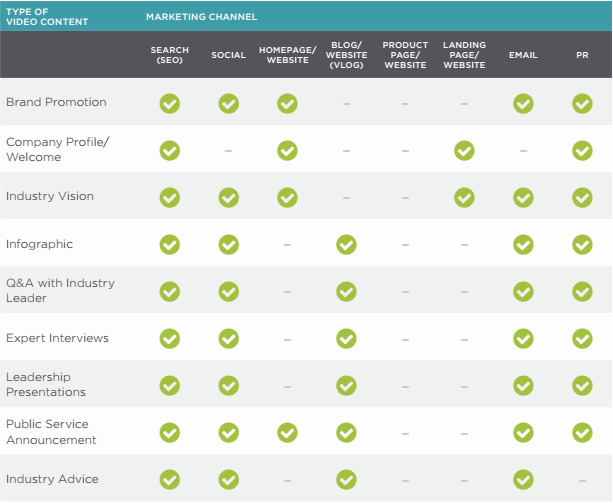When marketers ask us, “how can I get started with video?”, they’re often interested in making a big splash, such as launching a new product, services or program or intelligently building thought leadership and gained mindshare for their brand. And while they’re using video, it might not be in a strategic way and the results are, well, lackluster.
Is this you? Remember, video alone can’t solve your problems. Not every type of video content works for each stage of the customer journey. What seemed like a great idea at your roundtable can languish without proper planning and the right distribution strategy.
After all, the goal of an awareness campaign is to build your brand’s recognition, generating an affinity with buyers and catapulting your solution to “top of mind.” Your brand should be where target customers can easily find you (social, search, blog). Let us teach you how to best use these channels within your video marketing strategy to become a trusted source of information and the solution to your prospects’ problems. Our question shifts from ”how can I get started with video?” to “how can I use video in the right place at the right time to most effectively drive awareness? It’s a big jump, but don’t worry, we got you.
Why Video Works in the Awareness Stage of the Customer Journey
Why, hello! Video is effective in an awareness campaign because it is attention-getting and easily shareable. Social media networks and content management systems have redesigned workflows to make it easier to share video and push it to the forefront of digital consumption. Video is more memorable than other content mediums. In fact, audiences retain over 50% more information through the use of both verbal and visual cues.
Consider shorter, high-quality videos like brand promotions, infographics, expert interviews, leadership presentations, and short-form video teasers on social media sites like Facebook, Twitter, and YouTube. As with any piece of promoted content, distributed social video is best utilized to drive interested audiences to your site.
How to Create a Video Awareness Campaign: Key Questions
Video is a highly creative vehicle for your marketing messages. While the brainstorming process is fun, it’s important to place an emphasis on creating useful content for your audiences. Content with value, aligned with your audiences’ core values, will serve your brand better by creating resonance and winning more engagement. Consider the following video content creation prompts:
- What is the problem you are solving? How have your customers been affected?
- Can your audience relate? Better yet, can you elicit an emotional response?
- Have you humanized your brand? Which qualities can video convey?
Where to Promote Your Video Content
In our Video Marketing Hero’s latest guide, Strategies for Video Marketing Across the Customer Journey, we’ve included handy charts so at a glance you can understand what you should post and where. No surprises, optimized video content placed on your blog or in emails, press releases, and social media posts widen your video content footprint, driving more search queries to your site. As for the content itself, like a firm handshake, introduce yourself -- but your elevator pitch shouldn’t just tell what you do. It should explain how your business creates impact. What is your story? Think about who in your industry can help you tell this story and sell the vision of your brand promise in a unique and interesting way. If you can create an ongoing video series that continues to approach this premise from different perspectives, all the better.
As you can see, awareness videos are typically not well suited to product pages or landing pages as these are typically vehicles for conversion. Furthermore, if you’re looking to achieve more visibility within search engines utilizing your videos, optimize them correctly. This means crafting a keyword dense website page that speaks to the content of your video in the headers, subheads, alt text, meta description, and unique page url. Additionally, video transcripts add SEO value by providing more keyword rich information and context as well as supplemental copy to accompany your video.
What to Measure: Key Metrics for a Video Awareness Campaign
Now, the fun part! What gains can you expect from your awareness videos?
- Number of shares, likes, and retweets of videos on social channels
- Percent increase in website visits and referral sources
- Average number of unique visitors to the homepage
- Difference in number of blog visits and inbound links
- Number of video views on the homepage (or wherever awareness videos play on your site)
Monitoring these items means continually reviewing Google Analytics and integrating your online video platform with your CMS. Find different ways to canvas your audiences on different channels and keep compelling content front of mind. Then, review monthly reports and watch your pipeline grow. As we progress through this series, we will address how to continue to interact with your audiences and measure video marketing impact throughout the customer journey. Or if you can’t wait, download The Video Marketing Hero’s Guide, Chapter 4, below.
Create Videos for Each Customer Lifecycle Stage:


